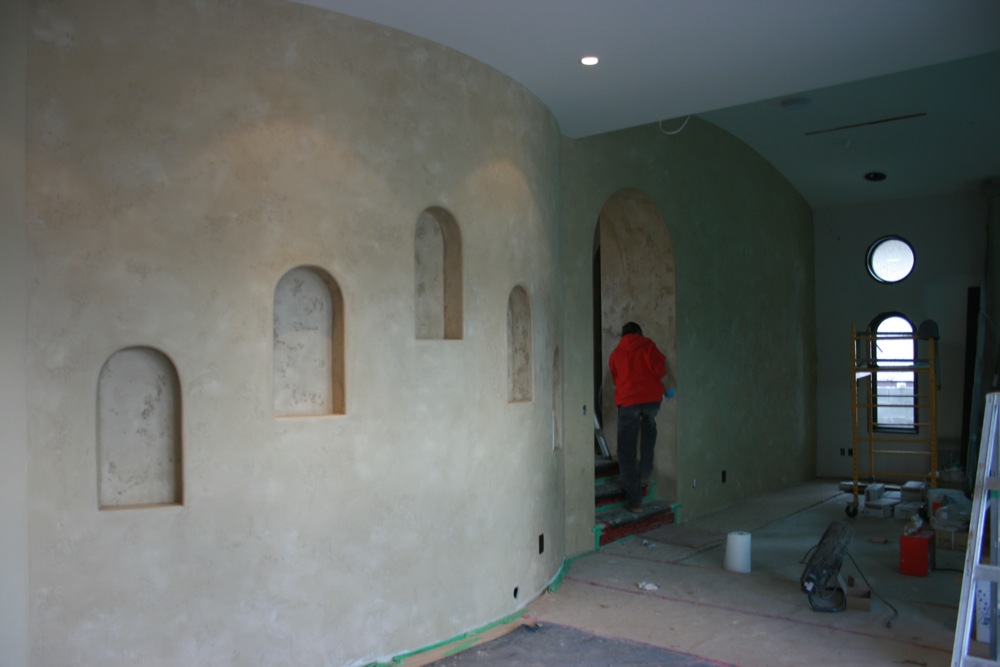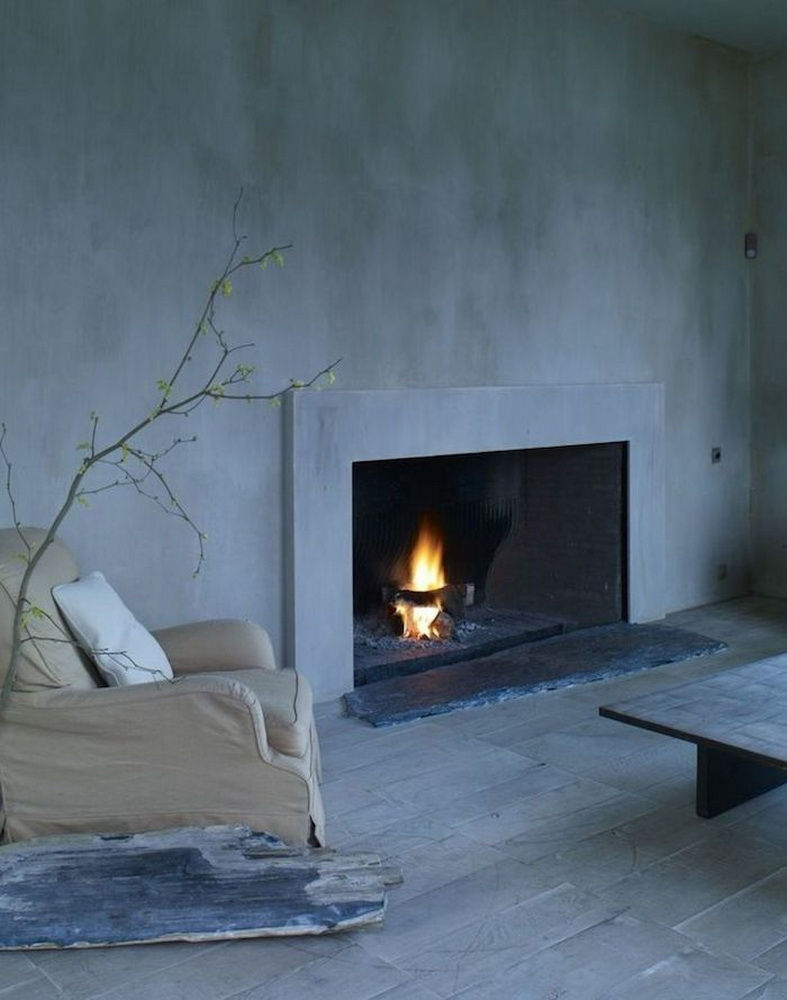

Lime putty plaster tends to shrink as it cures and dries. Sufficient pressure should be applied to cut into the surface of the work but not enough to reach the laths. Once the plaster has ‘steadied-up’ (normally an hour or so), the surface is scratched using a sharpened lath-scratcher, forming an undercut lattice pattern at 450 to laths. Note: lime plaster does not adhere well to laths – it ‘hangs’ from well-formed, reinforced nibs. A rough, open textured plaster surface is required.


When pricking up a ceiling, a forward push from the shoulder will usually be found to be more effective and less tiring than drawing the trowel towards the body. The pricking-up coat plaster should cover the laths by 10mm. Approximately 50% of the plaster is ‘pushed through’ the gaps between laths as it is crucial that good ‘nibs’ are formed above/behind the laths. Using a laying-on trowel, the basecoat plaster is applied with firm pressure at 450 to lath direction. Laths should be soaked 24 hrs in advance, and lightly dampened, but not over-wetted, prior to application of the pricking-up coat. Laths should be butted (not overlapped) and are available in various lengths to suit joist centres and avoid wastage. Laths are ‘block-staggered’ every 600-750mm. Laths (approx 30 x 6mm) should be untreated riven/hand split oak or chestnut and fixed with stainless steel ringshank nails (30 x 2.36mm). Lath work: It is not recommended that existing laths are retained. The lime putty must have been matured for a minimum of six months. Washed coarse-medium sand is used for base-coats and very fine washed quartz sand for the finish coat.

Occasionally, fibres are added at a reduced rate or omitted in the float coat. Solid backgrounds: Fibres are added to both the scratch and float coats at a rate equivalent to 2.5kgs animal hair per tonne of plaster. Lath work: Fibres are added to the pricking-up coat at a rate equivalent to 4kgs animal hair per tonne of plaster, and at an equivalent rate of 2.5kgs per tonne for the float coat. The surface of this coat can be left slightly textured by using a wooden or sponge float or finished smooth with a steel trowel. Third Coat: Known as the ‘setting coat’ or ‘finishing coat’.The object of this coat is to bring the surface to an even vertical or horizontal plane. Second Coat: Known as the ‘float coat’ or ‘straightening coat’.First Coat: When applied to solid walls, this is known as the ‘scratch coat’, and when applied to laths as the ‘pricking-up coat’.Lime plastering to laths is always three-coat work. One-coat work is coarse textured finish plaster reserved for medieval and early buildings. Two-coat work is often sufficient on flat surfaces such as brickwork. Three-coat work is normally necessary on uneven masonry. Lime plastering to solid masonry walls can be carried out in one, two or three coats.


 0 kommentar(er)
0 kommentar(er)
